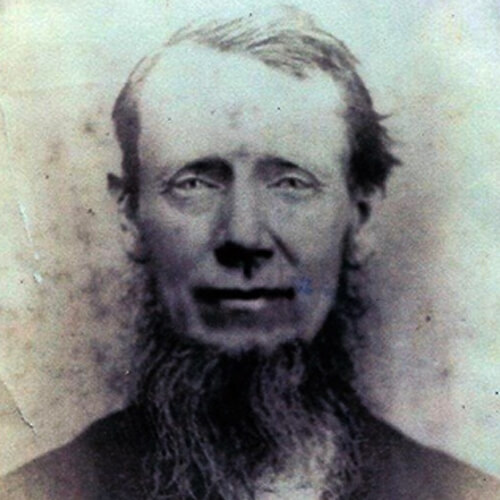A Brief History Of Orange County Indiana

Written by Arthur Dillard
Orange County, Indiana, was organized in 1816 and named for Orange County, North Carolina, from which early settlers came.
The principal towns in Orange County are Orleans, Paoli, West Baden Springs, and French Lick.
The Town of Orleans
The Town of Orleans was founded in March, 1815, two months after General Andrew Jackson's victory at New Orleans, for which it was named. Orleans has the distinction of being the oldest town in the county as it was organized before Orange County was created.
Orleans produced one of Indiana's outstanding military leaders during the Civil War, Brevet Brigadier General William T. Spicely. From a battlefield commission of captaincy at Buena Vista during the Mexican War, Spicely rose through the ranks to general, commanding the 24th Indiana Regiment during the Civil War. General Spicely and his men assisted Major General Ulysses S. Grant in a major battle preceding the siege at Vicksburg, enabling Union forces to obtain control of the river city from Confederate forces. The victory at Vicksburg gave momentum to the defeat of the Confederacy.
Click here to view the Town of Orleans Historic District
Paoli - The County Seat
Paoli, the county seat, was platted in 1816, and was named for Pasquale Paoli (1725-1807), a Corsican patriot, the namesake of Paoli Ashe, son of Samuel Ashe, governor of North Carolina.
The Paoli Historic District is a national historic district that encompasses 144 contributing buildings. The area was developed between about 1840 and 1940, and includes notable examples of Greek Revival, Italianate, and Queen Anne style architecture. Located in the district are the separately listed Thomas Newby Braxtan House and the Orange County Courthouse.
Click here to view the Town of Paoli Historic District
The Town of West Baden Springs
Dr. John R. Lane, an itinerant medicine peddler, built the first resort hotel in West Baden Springs, in 1855, and named it for the famous spa, West Baden, in Germany. It was first known as Mile Lick, since it was one mile from French Lick. Lee W. Sinclair operated the lavish West Baden Springs Hotel in 1888, until it was destroyed by fire in 1901. Sinclair rebuilt a new and larger hotel structure by 1902 with 708 rooms, one of the widest unsupported domes in the world, 208 feet in diameter, and with a mosaic tile floor in the atrium.
The Town of French Lick
The Town of French Lick was laid out in 1857 in French Lick Township. An early French settlement here near an animal lick gave the salt spring its name.
Dr. William A. Bowles established the first health resort at French Lick circa 1845. A man of many endeavors, Bowles was a physician, minister, politician, army officer, and newspaper editor. During the Civil War, he was active in the Knights of the Golden Circle, and was found guilty of treason by an army tribunal in Indianapolis in 1864 with four other co-conspirators and sentenced to death. In a very famous United States Supreme Court case, Ex Parte Milligan, the action of the army court was declared unconstitutional. The resort industry that Bowles founded in French Lick is world-famous today as the French Lick Spring Hotel.
Orange County Courthouse
The Orange County Courthouse is located on a gently sloping hill in the center of Paoli. For many generations the structure has been the unique dominating architectural feature of the community, and to many, serves as the symbol of Orange County. The first courthouse was located near the northwest corner of the public square provided for in the platting of the original town of Paoli by Jonathan Lindley in 1816. The structure was designed to be a temporary building in order to reserve space in the center of the public square for another courthouse to be erected shortly thereafter. The structure was a very unpretentious one-room, log building without floors or windows, and in the style of construction that was typical in that day. John Pickard was paid $25.00 for its construction in 1816.
The second courthouse was a two-story stone building, with twin chimneys in the Federal style of architecture common in Indiana during the early 1800's. Plans for its construction were made in 1817 and it was apparently finished in early 1819. Jonathan Lindley was the builder. The structure served its purpose until the late 1840's when it became apparent that a larger building was necessary to meet the needs of a growing county. Its original cost was $3,950.00.
The style of the present courthouse is Greek Revival. This particular style was introduced in America by Benjamin Henry Latrobe (1764-1820), an English architect who settled in Philadelphia in 1798. His design for the Bank of Pennsylvania gave this country its first building in Greek style. This type of architecture became almost immediately popular in the United States for government buildings and subsequently for private homes. The architectural beauty of the present courthouse is recognized nationally.
In 1933, Thomas Hart Benton, the noted American artist, included the building in his much discussed "Mural History of Indiana" painted for the Chicago Century of Progress Exposition. The mural is now displayed at the Indiana University auditorium. Photographs of the structure have appeared nationally in Life Magazine, The Architectural Forum, and The American Bar Association Journal, not to mention countless Hoosier publications. The architect of the courthouse is not officially recorded. Local historians confer this honor on William Watson Harmon, a skilled carpenter, from Berkshire, Mass., who arrived in Orange County in the late 1830's. The architectural style was probably selected by the building committee composed of Thomas Volney Thornton, John H. Campbell, Arthur J. Simpson, John A. Ritter, John Baker, John C. Albert, and Dr. Cornelius White, who were among the leading citizens of Orange County at the time. The courthouse was completed in 1850 at a cost of $13,561.85.
















































